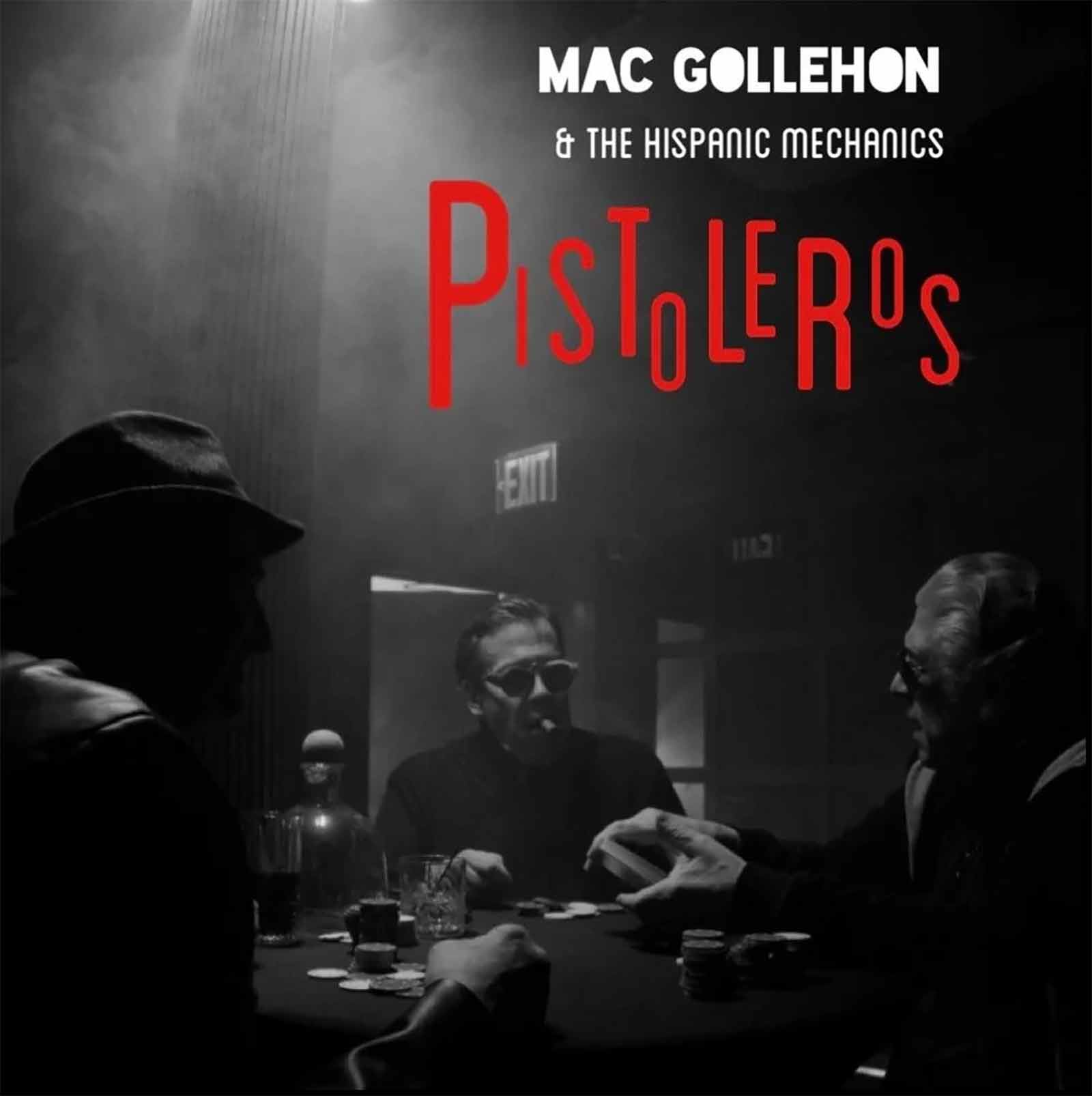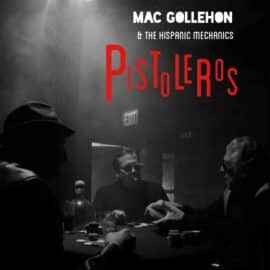| Jazz Fusion, Jazz moderne |

Mac Gollehon is not a musician who has ever played it safe. A trumpeter, composer, and multi-instrumentalist, he has spent his career slipping through the cracks of genre, refusing the comfort of categorization. His latest project, Pistoleros, is no exception. It’s a bold, sometimes unruly, experiment that positions him as a sonic traveler, charting territory at the margins of jazz fusion, Caribbean grooves, rock swagger, and electronic futurism.
At its core, the album feels like an echo of Miles Davis’s most adventurous impulses, one hears shades of Ascenseur pour l’échafaud, Davis’s 1958 score that blurred cinema and improvisation—but filtered through a post-industrial sensibility. Gollehon’s sound is less about noir Paris than about fractured landscapes, neon-lit cities, and the digital underbelly of contemporary life. What emerges is an informal, jumpy kind of fusion that unspools like a widescreen road movie, cinematic yet jagged, full of detours.
The range of instruments Gollehon commands here is dizzying: trumpet, trombone, tuba, piano, guitar, and vocals, all woven into the eight tracks. He is accompanied by percussionist Anthony Carrillo, a figure revered in Latin and jazz circles for his work with Batacumbele, Eddie Palmieri, Hilton Ruiz, Yambawa, Giovanni Hidalgo, Gonzalo Rubalcaba, Harry Belafonte, Paul Simon, and countless others. Carrillo brings rhythmic depth and authenticity, grounding the music’s Caribbean and Latin undercurrents while Gollehon pushes outward into hybrid terrain.
Notably, most of the tracks clock in under six minutes. That brevity seems calculated, a signal to radio programmers and streaming curators that this is not just a jazz record, but something that can slip into rock playlists or even club rotations. Indeed, there are stretches where Pistoleros sounds less like a jazz album than a rock experiment, pounding with insistent, loop-like beats and drenched in synth effects that feel intentionally abrasive. The result can be destabilizing, but also intriguing: music that hovers between dance-floor pulse and avant-garde collage.
Beneath the restless surface, however, lies an ambitious architecture. The album blends layers of Latin percussion with cinematic jazz textures, progressive rock energy, and electronic manipulations. The hybrid isn’t always seamless, but its intent is clear: to stage a dialogue between past and future, tradition and technology, acoustic resonance and synthetic distortion. If jazz is, at heart, about improvisation and risk, Pistoleros takes that ethos into the twenty-first century, where improvisation often happens as much with machines as with human partners.
The project extends beyond the audio. A short promotional film, shot, curiously, in mobile-phone format and available only on Vimeo, casts Gollehon in a surreal narrative as “Mac Attack,” a musician who gambles his career and recording contract in a blackjack showdown against a mafia boss and his crew, each villain representing a song on the album. The mob boss, Vinny “Bay Parkway Snake,” is portrayed by Vincent Pastore, forever associated with his role as Sal in The Sopranos. It’s an offbeat, campy piece of visual storytelling that underlines Gollehon’s taste for risk, but its limited format and distribution make it oddly difficult to share in an era where artists depend on digital virality.
All of this raises a broader question about where Gollehon stands at this moment in his career. Pistoleros does not present itself as a definitive artistic statement. Instead, it feels like a transitional work, an album in motion rather than an arrival. The music darts in multiple directions at once, sometimes exhilarating, sometimes disorienting. But that volatility seems part of the point. Gollehon is chasing sound, layering experiments, searching for a synthesis that may only fully emerge in the next project.
For that reason, Pistoleros carries the aura of a workshop. It documents the process of invention rather than the final product of it. Its true value lies less in polish than in exploration, the willingness to collide traditions, test new technologies, and stretch the definition of what jazz fusion can be. If one listens carefully, behind the shifts in rhythm and texture, one hears an artist wrestling with form, breaking it open to let something unexpected through.
The history of jazz is full of such transitional works. Think of Charles Mingus’s uneven but daring experiments in the late 1960s, or Miles Davis’s sometimes chaotic, always ambitious forays into fusion in the 1970s. These were not albums designed for easy listening; they were documents of struggle, of possibility, of searching. Pistoleros belongs in that lineage. It may not be the album that defines Mac Gollehon’s career, but it could be the one that sets the stage for what comes next.
In that sense, Pistoleros is both messy and necessary: a record that confounds expectations, blurs categories, and dares to embrace instability as a form of creation. Whether you hear it as exhilarating or bewildering, it refuses indifference. And in today’s music landscape, where so much product is engineered to blend into the background, that refusal alone makes it worth paying attention.
Thierry De Clemensat
Member at Jazz Journalists Association
USA correspondent for Paris-Move and ABS magazine
Editor in chief – Bayou Blue Radio, Bayou Blue News
PARIS-MOVE, September 19th 2025
Follow PARIS-MOVE on X
::::::::::::::::::::::::
Track Listing:
1. Pistoleros
2. Stud Poker
3. Sign It
4. Mac Attack
5. Vinny “Bay Parkway Snake”
6. Killer Joe “Zillionario”
7. Atiba “SideEye” Powers
8. Stacked Deck

